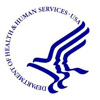Catalog of Environmental Programs 2012
| Federal agencies that contribute to EPA's environmental goals, and how they make a difference. |
the Catalog |
All Programs |
Programs by EPA Strategic Goal 1. Climate Change and Improving Air Quality 2. Protecting America's Waters 3. Cleaning Up and Sustainable Development 4. Safety of Chemicals and Preventing Pollution |
Programs by Agency AID, ARC, CNCS, CPSC, CSB, DHS, DOC, DOD, DOE, DOI, DOJ, DOL, DOS, DOT, ED, FHFA, GSA, HHS, HUD, NASA, NRC, NSF, OSTP, SBA, TVA, USDA, USPS, USTR, VA |

Department of Heath and Human Services |

EPA Goal 3: Cleaning Up Communities and Advancing Sustainable Development |
Division of Laboratory Sciences
Purpose
Centers for Disease Control and Prevention - National Center of Environmental Health - Division of
Laboratory Sciences (DLS) have helped change environmental public health by using advanced laboratory
science and innovative techniques. By preventing disease from exposure to toxic chemicals in
the environment; responding to terrorism and public health emergencies involving chemicals;
and improving laboratory methods to diagnose and prevent disease, the laboratory has been
in the vanguard of efforts to improve people's health across the nation and around
the world.
Source(s) of Information
1. CDC: Division of Laboratory Sciences
Related EPA Program(s)
Research: Safer Products for a Sustainable World:
In FY12, EPA research will look at problems from a systems perspective. The integrated research approach will help develop sustainable solutions
by adding a transformative component to EPA’s existing air research portfolio. CSS will, develop and conduct research leveraging the diverse
capabilities of in-house scientists and engineers, and bridge traditional scientific disciplines. Research plans will incorporate input from
external stakeholders such as federal, state and local government agencies, non-governmental organizations, industry, and communities
affected by environmental problems.
The CSS Program will achieve scientifically based outcomes through three research areas:
1. Developing the Scientific Knowledge, Tools, and Models for Integrated Evaluation Strategies
2. Improving Assessment Approaches and Informing Management for Chemical Safety and Sustainability
3. Targeting High Priority Research Needs for Immediate and Focused Attention
In FY 2012, EPA will integrate Computational Toxicology, Endocrine Disrupting Chemicals (EDCs), and Nanotechnology research, as well as
portions of Human Health, Human Health Risk Assessment, Pesticides and Toxics, and Sustainability research, into the Chemical Safety and
Sustainability Research Program.
The CSS research program will develop sustainability metrics to measure how changes in parameters that affect hazard and exposure impact
the degree to which a chemical is more or less environmentally sustainable throughout its life cycle and evaluate the impact of chemicals
on life stages and other susceptibility factors such as genetics and co‐existing diseases. Tools produced through the CSS research program
will use systems approaches to understand the links between exposure and toxicity pathways involved in disease.
Authorizing Legislation
• CAA, Sec. 103, 104 & 154
• CCA, 40 U.S.C 11318
• CERCLA
• Children’s Health Act
• 21st Century Nanotechnology Research and Development Act, 15 U.S.C. 750
• CWA, Sec. 101 - 121
• Economy Act, 31 U.S.C 1535
• ERDDAA, 42 U.S.C. 4361-4370
• FFDCA, 21 U.S.C. Sec. 346;
• FIFRA
• FQPA
• Intergovernmental Cooperation Act, 31 U.S.C. 6502
• National Environmental Policy Act of 1969, Section 102
• PPA, 42 U.S.C. 1310
• RCRA
• SDWA, 42 U.S.C.
• TSCA, Section 10, 15, 26 U.S.C
Other Programs under Goal 3
Other Programs from HHS
Top of page


